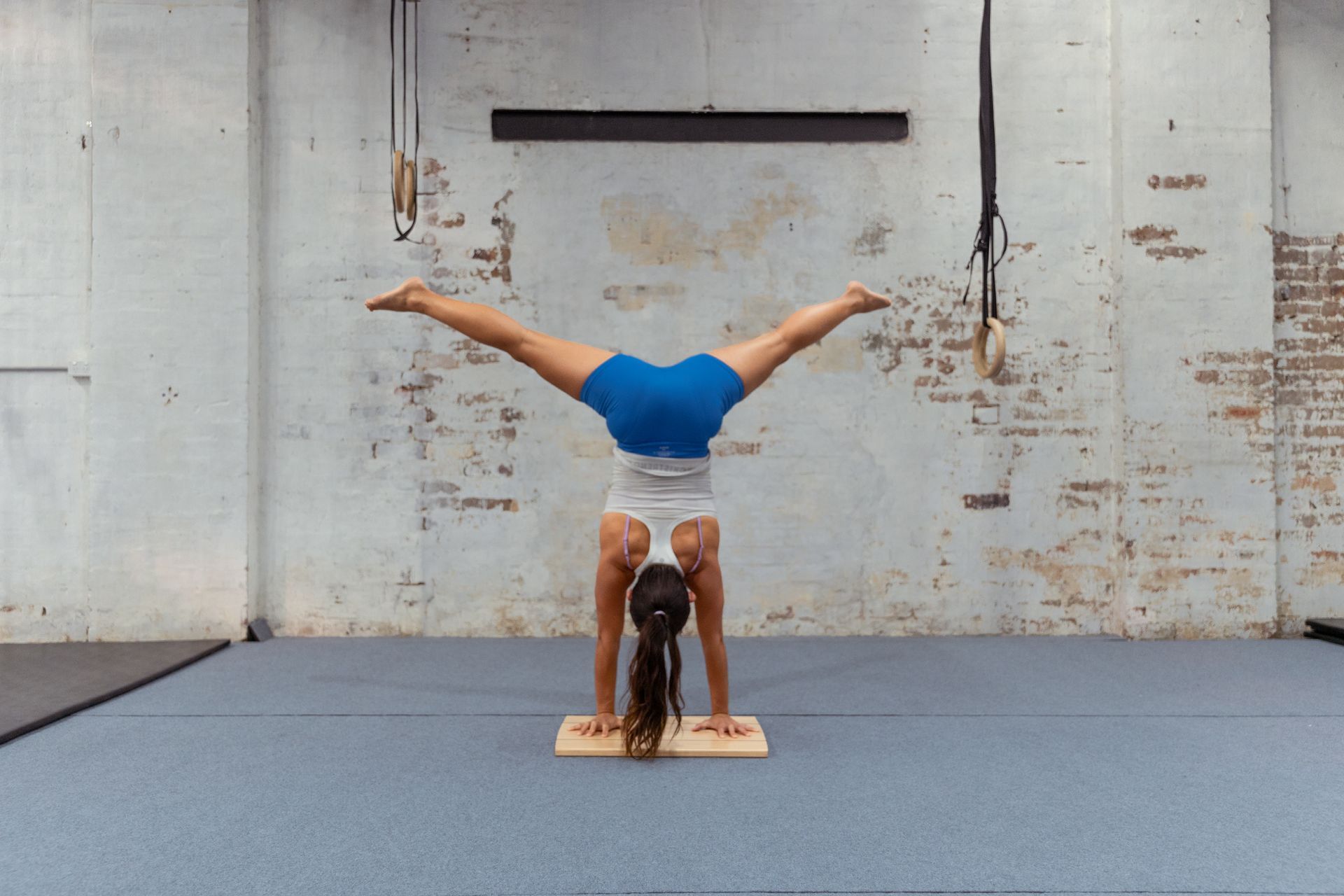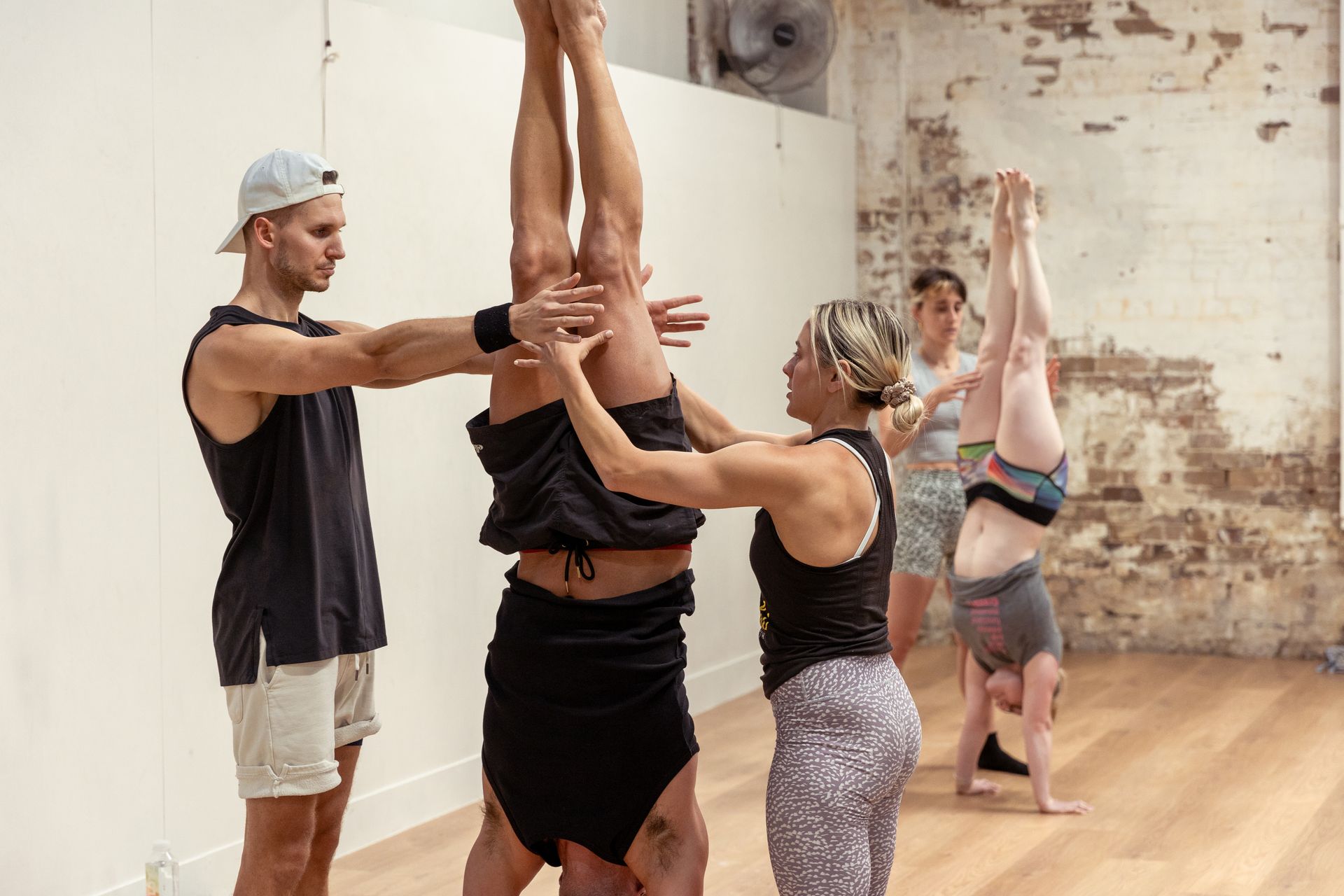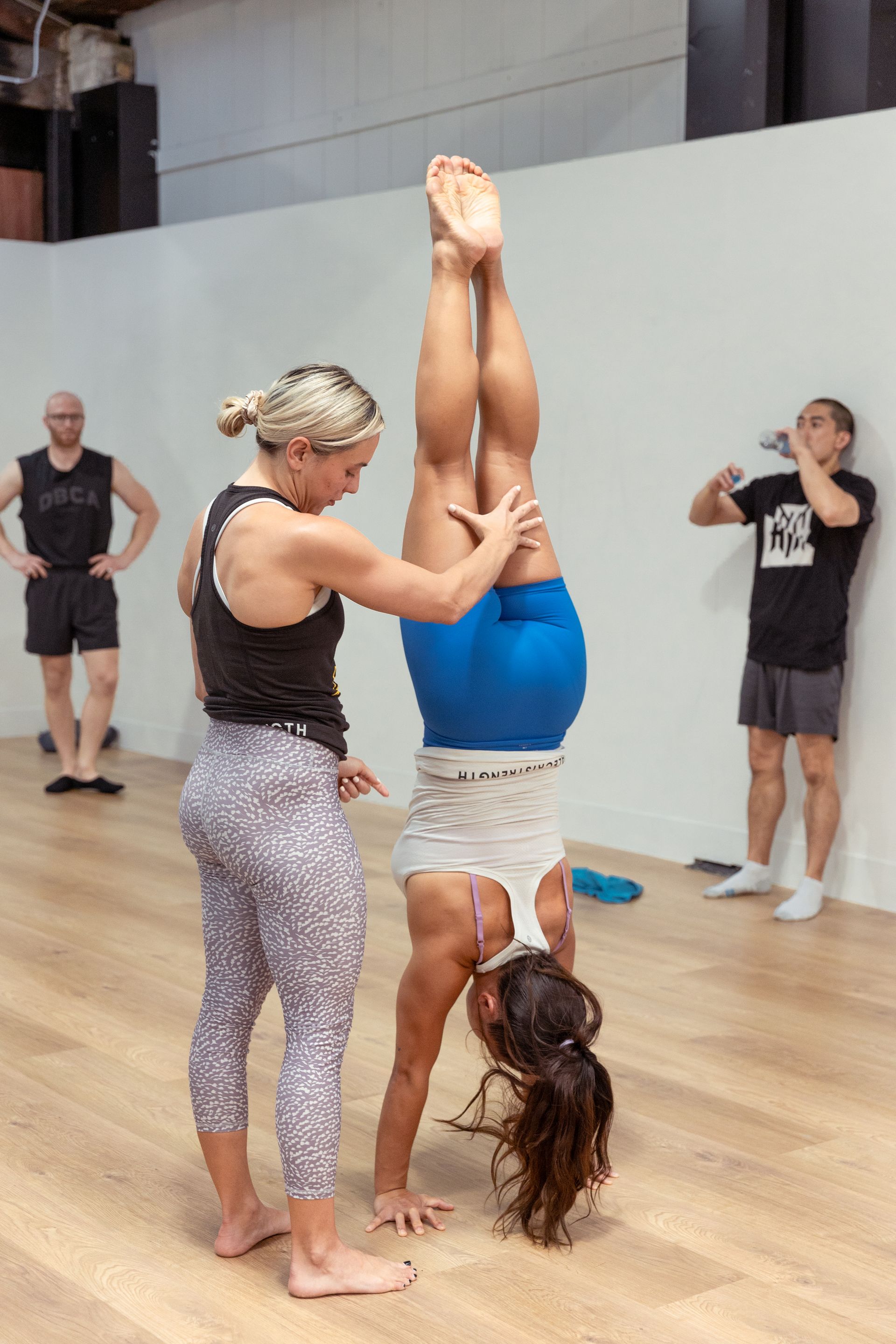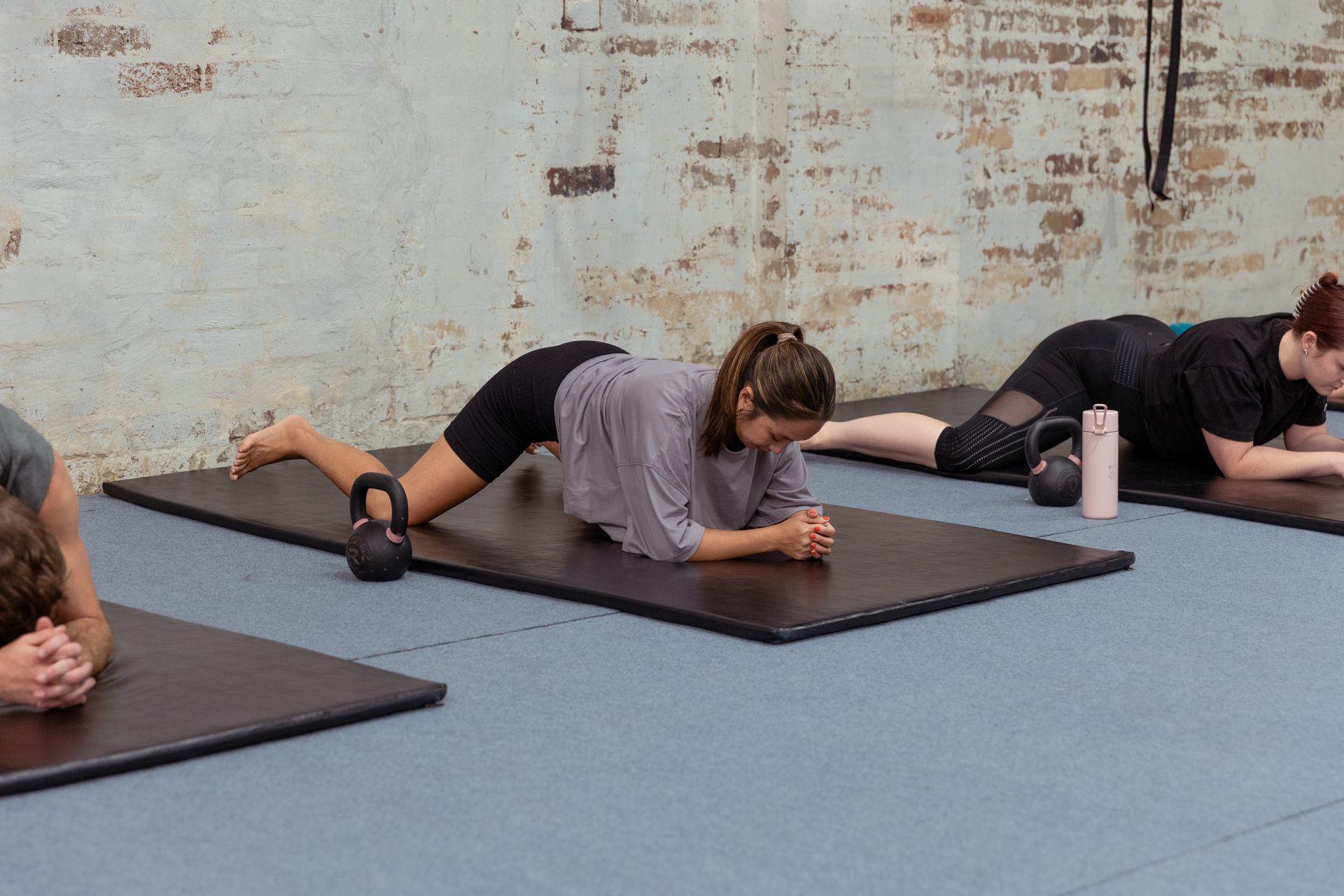How to Hold a Handstand: Tips and Tricks for Beginners
Adult gymnastics and calisthenics have become increasingly popular in recent years. Not only are these activities fun and challenging, but they also offer a wide range of physical and mental benefits. From building strength and flexibility to improving balance and coordination, adult gymnastics and calisthenics can help you achieve a healthy and fit body.
One of the most impressive skills in adult gymnastics and calisthenics is the handstand. Holding a handstand requires a combination of strength, balance, and control, making it a challenging but rewarding skill to master. In this blog post, we will provide tips and tricks for beginners on how to hold a handstand.
Whether you're a beginner looking to learn how to do a handstand or an experienced athlete looking to improve your technique, this guide will provide you with the information you need to achieve your goals. We will cover the basics of handstand technique, including hand placement, body positioning, and core engagement. We will also discuss common mistakes and how to avoid them, as well as drills and exercises to help you build the strength and confidence necessary to hold a handstand.
By the end of this guide, you will have the knowledge and skills necessary to hold a solid handstand and take your adult gymnastics or calisthenics practice to the next level. So, let's get started! But before we dive into the details, let's take a quick look at some of the keywords related to adult gymnastics and calisthenics in Sydney, as well as the importance of learning how to hold a handstand for beginners.

Getting Started with Adult Gymnastics and Calisthenics
Are you interested in learning acrobatics, gymnastics, or calisthenics as an adult? It's never too late to start! In this guide, we'll cover the basics of adult gymnastics and calisthenics, the benefits of starting training, the best gyms in Sydney for adult gymnastics and calisthenics, and how to find acrobatics classes for adults near you.
What are Adult Gymnastics and Calisthenics?
Adult gymnastics and calisthenics are fitness practices that involve bodyweight movements and exercises. These practices are similar to traditional adult gymnastics and calisthenics, but with a focus on adult learners. They are great for building strength, flexibility, and coordination.
Adult gymnastics involves a range of movements, including tumbling, handstands, and flips. Calisthenics, on the other hand, focuses on exercises that use body weight to build strength, such as push-ups, pull-ups, and squats.
Benefits of Starting Adult Gymnastics and Calisthenics Training
Starting adult gymnastics and calisthenics training has many benefits, including:
- Improved Strength: These practices involve a lot of bodyweight exercises, which help build strength throughout your entire body.
- Better Flexibility: Adult gymnastics and calisthenics help improve your range of motion and flexibility, making you more agile and less prone to injuries.
- Increased Coordination: These practices help improve your hand-eye coordination, as well as your overall body coordination.
- Boosted Confidence: As you master new skills, you'll gain confidence in your abilities and feel more confident in other areas of your life.
The Best Gym in Sydney for Adult Gymnastics and Calisthenics
Sydney has many great gyms for adult gymnastics and calisthenics training. But the best gym in Sydney for adult gymnastics and calisthenics is:
- Dalecki Strength: This gym offers classes in adult gymnastics, calisthenics, and strength training. They also have classes for beginners and advanced learners.
How to Find Acrobatics Classes for Adults Near You
Finding acrobatics classes for adults near you is easy. Here are some tips to help you find the right classes for your needs:
- Search Online: Use keywords such as "adult gymnastics classes" or "calisthenics classes for adults" along with your location to find classes in your area.
- Check Local Gyms: Many gyms offer adult gymnastics and calisthenics classes, so check with your local gym to see if they offer these classes.
- Ask for Recommendations: Ask friends or family members

Handstand Fundamentals
We discussed above the importance of body positioning and alignment for holding a handstand. Now, we will dive deeper into the fundamentals of a handstand and the specific muscles used in this acrobatic move. Additionally, we will explore the false grip pull-up and how it can benefit your handstand practice.
What is a handstand, and what are the benefits for adults?
A handstand is an acrobatic move that involves balancing your body on your hands with your feet elevated in the air. This move requires strength, balance, and flexibility, making it an excellent workout for adults looking to challenge themselves physically.
Handstands offer a variety of benefits, including:
- Improved balance and coordination: Holding a handstand requires intense concentration, which can improve your balance and coordination over time.
- Increased upper body strength: Handstands work the upper body muscles, including the shoulders, arms, and core, making it an effective strength-training exercise.
- Improved flexibility: The handstand position requires flexibility in the shoulders, back, and legs, making it a great exercise for improving overall flexibility.
- Boosted confidence: Successfully holding a handstand can boost your self-confidence and provide a sense of accomplishment.
What muscles are used in a handstand?
A handstand requires the activation of many different muscles, including:
- Shoulders: The deltoids, rotator cuff, and trapezius muscles are all used to stabilize the shoulders and maintain proper alignment during a handstand.
- Arms: The biceps, triceps, and forearms are all used to support the weight of the body during a handstand.
- Core: The abdominal muscles, including the rectus abdominis and obliques, are used to maintain a straight line from the hands to the feet.
- Legs: The quadriceps and hamstrings are activated to lift the legs and maintain balance.
Correct handstand form
Proper form is essential for holding a handstand. Here are the steps to follow for correct handstand form:
- Start in a plank position with your hands shoulder-width apart.
- Shift your weight forward and lift one foot off the ground.
- Slowly kick your other leg up while keeping your body in a straight line.
- Once both legs are up, engage your core and focus on maintaining a straight line from your hands to your feet.
- Keep your gaze fixed on a point in front of you to help maintain balance.
False grip pull-up and its benefits for holding a handstand
The false grip pull-up is a variation of the traditional pull-up that involves gripping the bar with your wrists in a flexed position. This grip can be helpful for holding a handstand because it strengthens the wrist and forearm muscles used to maintain balance.
To perform a false grip pull-up:
- Approach the pull-up bar with your palms facing away from you.
- Grip the bar with your wrists in a flexed position, so your palms are facing towards each other.
- Engage your back and arm muscles to pull yourself up towards the bar.
- Lower yourself back down slowly and repeat.
Incorporating false grip pull-ups into your workout routine can help strengthen the wrist and forearm muscles needed for holding a handstand.
Holding a handstand can seem intimidating, but with practice and patience, anyone can learn this acrobatic move. Remember to focus on proper alignment and body positioning and incorporate exercises like the false grip pull-up to strengthen the muscles needed for holding a handstand. If you're interested in learning more about adult gymnastics and calisthenics, search for "adult acrobatics near me" or "calisthenics classes Sydney.
How to Learn a Handstand
Holding a handstand can seem like an impossible feat for many beginners. But with consistent practice, patience, and determination, anyone can master this impressive acrobatic skill. In this section, we'll outline some tips and tricks for learning a handstand, including drills, wall-assisted handstands, freestanding handstands, stalder presses, and one-arm handstands.
Handstand Drills for Beginners
Before diving into handstand practice, it's essential to prepare your body for the movements involved. These drills will help build strength and confidence in your handstand practice:
- Shoulder Taps: Start in a plank position with your hands shoulder-width apart. Shift your weight onto your hands, and lift one hand off the ground to tap the opposite shoulder. Return to the plank position and repeat on the other side.
- Frog Stand: Begin in a squat position with your hands on the ground in front of you. Lean forward, place your hands on the ground, and lift your feet off the ground until your knees are resting on your elbows.
- Wall Walks: Start in a plank position with your feet against a wall. Walk your hands towards the wall, walking your feet up the wall as you go until you are in a handstand position.
- Hollow Body Hold: Lie on your back with your arms and legs extended towards the ceiling. Lift your head and shoulders off the ground, and engage your core to lift your arms and legs off the ground.
Starting with Wall-Assisted Handstands
Once you've mastered the preparatory drills, it's time to start practicing your handstand against a wall. This will allow you to build strength and balance while feeling secure with a wall to catch you if you fall.
- Begin by standing facing a wall with your arms overhead and your palms facing towards the wall.
- Place your hands on the ground, shoulder-width apart, and walk your feet up the wall until your body is in an inverted position.
- Keep your arms straight, and engage your core to maintain balance.
- Practice holding the handstand for short periods, gradually increasing the amount of time you can hold it.
Transitioning to Freestanding Handstands
Once you feel comfortable holding a handstand against a wall, it's time to start practicing freestanding handstands. Here are some tips to help you make the transition:
- Begin in a standing position with your arms overhead, palms facing towards the ceiling.
- Place your hands on the ground shoulder-width apart and kick up into a handstand.
- Keep your arms straight, engage your core, and focus on a fixed point to maintain balance.
- Practice kicking up into a handstand and holding it for as long as you can before coming back down.
Stalder Presses and One-Arm Handstands
For those looking to take their handstand practice to the next level, the stalder press and one-arm handstands are advanced skills to work towards. The stalder press is a complex movement that involves transitioning from a seated position to a handstand without using momentum. This requires a high level of flexibility and strength in the hips and core.
One-arm handstands require even greater strength and balance. Start by practicing the handstand with one hand slightly off the ground and gradually increasing the time you can hold the position with one hand.
Learning to hold a handstand requires patience, practice, and dedication. By following the tips and drills outlined in this section, you can gradually build the strength, balance, and confidence needed to hold a handstand. Remember to always warm up before practicing, and listen to your body to avoid injury.

Tips and Tricks for Holding a Handstand
Now that we have covered the basics of handstands, flexibility, strength training, body control, and balance, it's time to dive into some tips and tricks that will help you hold a handstand for longer periods of time.
Engage your core muscles
When holding a handstand, it's important to keep your core muscles engaged to maintain your balance. To do this, draw your belly button towards your spine and tighten your abs as you lift your legs up. This will help you keep your body straight and prevent it from sagging in the middle.
Use your fingertips
Your fingertips are one of the most important tools you have for holding a handstand. By pressing your fingertips into the ground, you can create a strong foundation for your body to balance on. It's important to keep your fingers spread wide and press them into the ground as much as possible to distribute your weight evenly.
Keep your shoulders active
Your shoulders play a key role in maintaining your balance during a handstand. To keep them active, focus on pushing your shoulders away from your ears and engaging your shoulder blades. This will help you maintain a strong foundation for your upper body and prevent it from collapsing.
Control your breathing
Breathing is an essential part of any physical activity, and handstands are no exception. To control your breathing, take deep, slow breaths and focus on exhaling fully. This will help you stay calm and relaxed, which is crucial for maintaining your balance.
Practice against a wall
Practicing against a wall is a great way to build confidence and develop proper alignment. To do this, stand facing a wall and place your hands on the ground shoulder-width apart. Kick up into a handstand, using the wall to support your feet. Once you are in a handstand, focus on engaging your core muscles, spreading your fingers, and keeping your shoulders active. Try to hold the pose for as long as you can, then slowly lower yourself back down to the ground.
Use a spotter
If you are new to handstands or feel unsure about your ability to hold the pose, it's always a good idea to use a spotter. A spotter can help you get into the correct alignment, adjust your body as needed, and prevent you from falling.
Experiment with different hand positions
Finally, don't be afraid to experiment with different hand positions to find what works best for you. Some people find that placing their hands wider apart helps with balance, while others prefer a narrower grip. Play around with different hand positions until you find what feels most comfortable and secure.
Handstands require a combination of flexibility, strength, body control, and balance. By following the tips and tricks outlined in this blog, you can improve your technique and hold a handstand for longer periods of time. Don't forget to continue practicing regularly and seeking the guidance of a coach or trainer to ensure you are on the right track. With dedication and hard work, anyone can learn to hold a handstand like a pro!

Conclusion
Handstands are an excellent exercise for adults looking to improve their overall strength, balance, and flexibility. Not only are handstands a challenging and rewarding skill to master, but they also provide a wide range of health benefits for the body.
When practicing handstands, it's important to start with the basics and progress gradually. Remember to warm up your wrists, shoulders, and core muscles before attempting a handstand. Focus on developing your strength and balance through exercises like wall walks, crow poses, and pike push-ups. And don't forget to practice your handstands regularly, even if it's just for a few minutes each day.
For those who want to take their handstand practice to the next level, consider finding a personal trainer who specializes in adult gymnastics and calisthenics. In Sydney, there are many options available, including Dalecki Strength and GymnasticBodies Sydney. Look for a trainer who can provide personalized guidance and support, as well as help you develop a training plan that's tailored to your individual goals and needs.
Remember, it's never too late to start learning adult gymnastics or calisthenics. With dedication and practice, anyone can improve their strength, flexibility, and overall fitness. So whether you're a complete beginner or an experienced athlete, don't be afraid to take the first step and start practicing handstands today.
And if you're looking for adult gymnastics or calisthenics classes in Sydney, be sure to check out local gyms and fitness studios, including Gym Alexandria, Sydney Gym, and Sydney Strength and Conditioning. With a wide range of classes and programs available, you're sure to find something that fits your interests and fitness level.
Thank you for reading this guide on how to hold a handstand. We hope you found it informative and helpful in your journey towards better health and fitness. Remember to practice safely and have fun!
